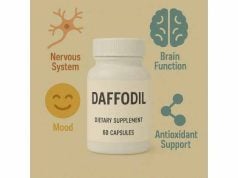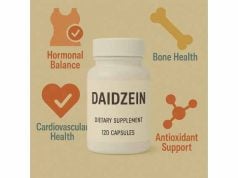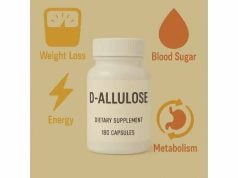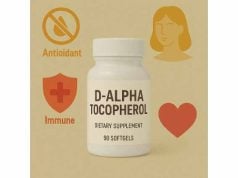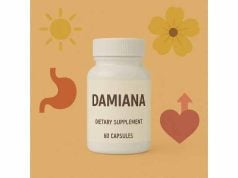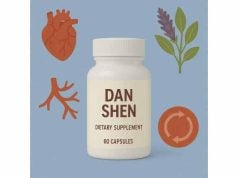
Dipotassium glycyrrhizinate (often listed as “dipotassium glycyrrhizate” or simply “DPG”) is a salt of glycyrrhizic acid, the signature compound from licorice root. In modern skin care, it shows up in serums, gels, masks, and post-procedure creams because it helps quiet redness, soothe irritation, and support barrier recovery. Formulators also use it to improve the feel of actives that can sting, such as retinoids or acids. Early lab and clinical research suggests benefits for atopic dermatitis, acne-prone skin, and wound healing, especially when DPG is used as an adjunct to proven therapies. Because glycyrrhizin can affect mineral balance if taken in excess by mouth, most evidence and guidance focus on topical use. This guide explains what DPG is, how it works, where it helps, how to use it, and when to avoid it.
Essential Insights for Dipotassium Glycyrrhizinate Users
- Helps calm redness and itch and supports barrier comfort in sensitive or eczema-prone skin.
- May assist acne care by moderating inflammation and improving post-blemish marks.
- Typical leave-on concentration is 0.05–0.5 percent; some products use up to 1 percent.
- Discontinue if you develop worsening irritation, swelling, or dizziness after new use.
- Avoid oral use if pregnant, hypertensive, on diuretics, or with kidney or heart disease.
Table of Contents
- What is dipotassium glycyrrhizinate?
- Does it really help skin?
- How to use it in routines
- Common mistakes and fixes
- Side effects and who should avoid
- What the research says now
What is dipotassium glycyrrhizinate?
Dipotassium glycyrrhizinate is the dipotassium salt of glycyrrhizic acid, a triterpenoid saponin naturally found in licorice species such as Glycyrrhiza glabra and Glycyrrhiza uralensis. In cosmetics, you will see it labeled as “dipotassium glycyrrhizate” or “dipotassium glycyrrhizininate.” Despite the different spellings, these terms refer to the same functional ingredient derived from licorice. Chemically, DPG is amphiphilic, meaning it has both water-loving and oil-loving parts, which helps it disperse in water-based formulas while interacting with skin lipids. That makes it a helpful soothing and conditioning agent for leave-on products and masks.
Mechanistically, DPG is valued for anti-inflammatory and anti-irritant actions. Lab and preclinical work shows down-regulation of inflammatory mediators such as interleukins and cyclooxygenase pathways, along with up-regulation of anti-inflammatory signals. In plain terms, it nudges skin away from an overactive inflammatory state. In barrier-stressed skin, that often translates to less sting, less visible redness, and better tolerance of other actives. Because glycyrrhizic acid derivatives can interact with steroid signaling locally in skin, DPG is sometimes paired with mild corticosteroids or calcineurin inhibitors in dermatology settings to help patients stay comfortable on lower medication doses. You will also find it alongside niacinamide, ceramides, and humectants, where it acts as a calm-the-crowd teammate rather than the star of the show.
Unlike deglycyrrhizinated licorice (DGL) extracts marketed for oral digestive support, DPG contains the glycyrrhizin moiety. That matters for safety when taken by mouth in high amounts because glycyrrhizin metabolites can inhibit an enzyme that protects against cortisol acting like aldosterone in the kidney. Topical use, however, minimizes systemic exposure, and industry safety assessments have long supported DPG as safe as used in cosmetics, commonly up to about one percent in leave-on formulas. In short, DPG is best viewed as a topical skin soother with potential to help several inflammatory concerns when built into a routine that already does the fundamentals well.
Does it really help skin?
Evidence supports DPG as a helpful adjunct for inflammatory and sensitive-skin conditions rather than a stand-alone cure. The clearest clinical signal is in atopic dermatitis maintenance. In a recent randomized, parallel-controlled study in adults with mild to moderate eczema, emollients containing dipotassium glycyrrhizin were used during remission periods. Over the study window, participants using the DPG-containing emollients experienced greater reductions in composite eczema severity scores and itch ratings and had higher complete response rates than those not using emollients, with no notable safety issues. That pattern aligns with real-world goals in eczema care: stretch out the calm periods, reduce flare frequency, and lean less on rescue medications.
DPG may also contribute to wound care and post-procedure comfort. In controlled animal models of cutaneous wound healing, topical DPG accelerated re-epithelialization, increased collagen content, and reduced pro-inflammatory cytokines while increasing interleukin-10, a cytokine associated with resolution of inflammation. While animal data do not guarantee identical human results, these findings explain why DPG is often included in products marketed for post-peel recovery, laser aftercare, and chafed or over-exfoliated skin. Users often describe a quicker return to normal feel with less tightness and visible erythema in the days following a procedure.
For acne-prone skin, DPG can play a supportive role. Its parent aglycone, glycyrrhetinic acid, has been studied for acne through both experimental models and small clinical evaluations, with signals of decreased inflammatory lesion counts, reduced sebogenesis markers, and calmer background redness. Formulators commonly combine DPG with retinoids, salicylic acid, azelaic acid, and niacinamide to soften the early adaptation period and to help with post-inflammatory erythema and hyperpigmentation. Although DPG is not a substitute for evidence-based acne medications, it can make comprehensive regimens more tolerable and may modestly improve the evenness of tone after breakouts.
Some users also look to DPG for pigmentation concerns. Licorice-derived actives are known to influence melanin pathways, including tyrosinase activity, and to visibly brighten tone in select formulas. In practice, DPG’s pigment-evening effects are usually mild and gradual and work best when paired with proven brighteners like azelaic acid or vitamin C, alongside diligent sunscreen use. If your goal is faster correction of established dark marks, you will likely need targeted ingredients and sun protection, with DPG serving as a comfort and consistency booster that helps you stick with the plan.
Overall, the strongest pattern is that DPG helps the skin feel and behave less inflamed, which supports better adherence to primary therapies and smoother recovery after irritation. Think of it as a reliable sidekick for sensitive and reactive complexions.
How to use it in routines
Start by checking the ingredient list for “dipotassium glycyrrhizate” or “dipotassium glycyrrhizinate.” In leave-on products, typical amounts range from 0.05 to 0.5 percent; some formulas use up to about one percent. These levels are consistent with long-standing cosmetic safety assessments and are sufficient for soothing benefits. Because labeling rarely states exact percentages, choose products from brands that publish concentrations or place DPG high enough in the list to suggest meaningful inclusion, usually within the first half of the list for simpler serums.
For daily skin care, a simple approach works well:
- Cleanse gently. Avoid harsh scrubs or high-alcohol toners that undo DPG’s calming work.
- Apply actives and DPG. If your product is a serum, apply it after watery toners and before thicker creams. Many barrier serums combine DPG with niacinamide, panthenol, and ceramides to cover multiple bases.
- Moisturize. Lock in hydration with a cream that matches your skin type. DPG integrates smoothly with humectants and emollients.
- Protect. Use broad-spectrum sunscreen every morning. DPG can ease sunscreen wear by reducing sting in sensitive users.
Frequency depends on your routine. For calming support, once or twice daily is typical. If you are starting a retinoid or exfoliating acid, use DPG at the same time of day to reduce the early adaptation period. For atopic dermatitis maintenance, pair a DPG-containing emollient with your standard bland moisturizer during remission periods to help stretch the calm between flares. In acne routines, combine DPG with proven actives and apply it before or after the medication step based on the product texture. Many find success using a thin DPG serum first, then benzoyl peroxide or adapalene, followed by a moisturizer.
Patch testing is wise if your skin is highly reactive. Apply a pea-sized amount behind the ear or on the inner forearm once daily for two days. If no concerning reaction appears by day three, move to facial use. Expect soothing effects in days, with visible tone steadiness and calmer feel in one to two weeks. For eczema maintenance or post-procedure comfort, give it a few weeks of consistent use to judge results. As with all cosmeceuticals, DPG works best as part of a complete plan: gentle cleansing, smart actives, moisturization, and daily sun protection.
Common mistakes and fixes
Relying on DPG alone for medical conditions. DPG is supportive, not curative. For atopic dermatitis, acne, or rosacea, it belongs alongside guideline-supported therapies. If flares persist, consult a clinician to optimize prescriptions, then keep DPG for comfort and maintenance.
Using a harsh routine that cancels out benefits. Over-exfoliating with acids, scrubbing, or using strong cleansers undermines DPG’s calming effect. Fix this by reducing exfoliation to no more than two or three times weekly, switching to a mild cleanser, and anchoring your routine with a fragrance-free moisturizer.
Expecting fast pigment fading from DPG alone. Licorice derivatives can influence melanin pathways, but DPG’s brightening is subtle. Pair with sun protection daily and add targeted brighteners such as azelaic acid or vitamin C if hyperpigmentation is a primary goal.
Layering conflicts by texture, not logic. DPG plays well with most actives, but irritation can arise if you pile on multiple strong ingredients at once. Introduce one new product at a time, separate potent actives by time of day if needed, and let skin guide the pace. If redness spikes, scale back to the simplest routine plus DPG and moisturizer for one week before re-introducing actives.
Misunderstanding the label. “Licorice” on a bottle can mean whole-plant extracts, isolated glycosides, or DPG. Effects and tolerability vary. If you specifically want DPG’s soothing profile, look for “dipotassium glycyrrhizate/glycyrrhizinate” in the ingredients list. When possible, choose fragrance-free products to reduce the risk of unrelated irritation.
Skipping a patch test before post-procedure use. Even soothing ingredients can irritate freshly treated skin. After peels or lasers, follow your provider’s instructions first. Introduce DPG only when the barrier is closed, unless your clinician advises otherwise. Start with a small amount once daily, then increase if well tolerated.
Assuming more is better. Concentrations above one percent are uncommon and not necessary for everyday calming benefits. If a product advertises very high levels, it may not translate to extra comfort and could increase the risk of irritation from the base formula. Choose well-balanced, fragrance-free options and evaluate by how your skin feels over two to four weeks.
Side effects and who should avoid
Topically, DPG has a favorable safety profile. In cosmetic safety assessments, DPG and related licorice derivatives were considered safe as used, with typical leave-on concentrations up to about one percent and low risk of irritation or photosensitization. Most people experience no side effects beyond occasional mild tingling when applied to compromised skin. If a new product stings, try applying it over a bland moisturizer or reduce use to once daily until your barrier settles.
Because DPG contains glycyrrhizic acid, caution is essential with oral exposure. High oral intake of glycyrrhizin can inhibit the kidney enzyme that keeps cortisol from activating mineralocorticoid receptors. The result can mimic excess aldosterone: sodium retention, potassium loss, hypertension, edema, muscle weakness, and, in severe cases, abnormal heart rhythms. Case series and reviews identify higher dose and longer duration as key risk drivers, with additional risks in older adults, those with kidney disease, and those taking interacting medications such as loop or thiazide diuretics. For that reason, DPG should be used primarily on the skin, and you should avoid self-supplementing with oral forms unless a clinician specifically recommends and supervises it.
Who should be cautious or avoid DPG products:
- Individuals with a history of contact allergy to licorice derivatives or any component in the formula.
- Pregnant individuals considering oral licorice products or lozenges with glycyrrhizin. Topical, short-term cosmetic use is generally considered low risk, but check with your obstetric clinician for personalized guidance.
- People with uncontrolled hypertension, chronic kidney disease, or heart failure should avoid oral glycyrrhizin and be mindful of topical products that might be licked or ingested (for example, lip products).
- Those on diuretics, digoxin, or systemic corticosteroids should avoid oral glycyrrhizin products because of potential additive effects on potassium and blood pressure.
What to do if problems occur: Stop the product and switch to a plain moisturizer. Seek urgent care if you develop dizziness, limb weakness, or palpitations after ingesting licorice products. For persistent facial burning or swelling, consult a dermatologist to rule out allergic contact dermatitis. Remember, most topical DPG products are well tolerated; issues usually arise from formula fragrances, acids, or the base rather than the DPG itself.
What the research says now
Recent studies give DPG a practical, adjunctive role. In adult atopic dermatitis, a randomized, parallel-controlled trial reported that emollients containing dipotassium glycyrrhizin reduced composite severity scores and itch more than no-emollient care during remission periods, with higher complete response rates and no notable safety concerns. That supports using DPG-containing emollients to lengthen calm intervals and improve comfort between flares. The trial’s design reflects real-world maintenance rather than acute flare treatment, which is where a soothing adjunct fits best.
Preclinical work provides a mechanistic rationale. In controlled animal wound models, DPG sped re-epithelialization, increased collagen deposition, and shifted cytokine profiles toward resolution, including lower tumor necrosis factor and higher interleukin-10. These changes track with the visible, day-to-day experience of less redness and faster return to normal feel after irritation. Together, such findings explain why DPG shows up in post-procedure and barrier-support products.
For acne, evidence centers on the licorice aglycone, glycyrrhetinic acid. Experimental and early clinical work indicates reductions in inflammatory markers, sebogenesis signals, and lesion counts when GA is used topically in well-designed formulations. While that is not identical to DPG, it supports the broader licorice-derived pathway of calming inflammation and improving tolerance within acne regimens. In practice, DPG is commonly paired with retinoids, azelaic acid, or benzoyl peroxide to help users stay consistent through the initial irritant phase and to ease post-blemish erythema.
Safety data are reassuring for topical use. A comprehensive cosmetic ingredient review concluded that glycyrrhizic acid salts, including dipotassium glycyrrhizate, are safe as used in cosmetics and are not phototoxic at tested concentrations. Importantly, this review also reminds us that oral glycyrrhizin can cause dose-dependent sodium retention and potassium loss through enzyme inhibition in the kidney. Contemporary clinical reviews from national health agencies echo that oral warning, while noting that topical use in standard cosmetic amounts is generally safe for most people.
What is missing? Large, multicenter randomized trials directly comparing DPG formulas against standard moisturizers in eczema maintenance, head-to-head studies in acne tolerability, and standardized concentration reporting on product labels. Until those data arrive, the practical takeaway is straightforward: DPG is a useful, well-tolerated soother that makes good routines easier to follow and may modestly enhance outcomes, especially for sensitive and dermatitis-prone skin. Use it to reduce day-to-day irritation, not to replace your primary treatment.
References
- Investigating the efficacy of dipotassium glycyrrhizin emollients in adult atopic dermatitis: A focused randomized parallel-controlled clinical study 2025 (RCT)
- Dipotassium Glycyrrhizininate Improves Skin Wound Healing by Modulating Inflammatory Process 2023
- Clinical Risk Factors of Licorice-Induced Pseudoaldosteronism Based on Glycyrrhizin-Metabolite Concentrations: A Narrative Review 2021
- Licorice Root 2025 (Safety overview)
- Final report on the safety assessment of Glycyrrhetinic Acid, Potassium Glycyrrhetinate, Disodium Succinoyl Glycyrrhetinate, Glyceryl Glycyrrhetinate, Glycyrrhetinyl Stearate, Stearyl Glycyrrhetinate, Glycyrrhizic Acid, Ammonium Glycyrrhizate, Dipotassium Glycyrrhizate, Disodium Glycyrrhizate, Trisodium Glycyrrhizate, Methyl Glycyrrhizate, and Potassium Glycyrrhizinate 2007 (Safety assessment)
Disclaimer
This information is educational and is not a substitute for medical advice, diagnosis, or treatment. Always speak with a qualified health professional about your specific skin condition, medications, and any supplements you use. If you are pregnant, have hypertension, kidney or heart disease, or take diuretics or corticosteroids, seek medical guidance before using any licorice-derived products by mouth.
If you found this guide useful, please consider sharing it on Facebook, X, or your preferred platform, and follow us for more science-based skin health explainers. Your support helps us keep creating thoughtful, high-quality content.

